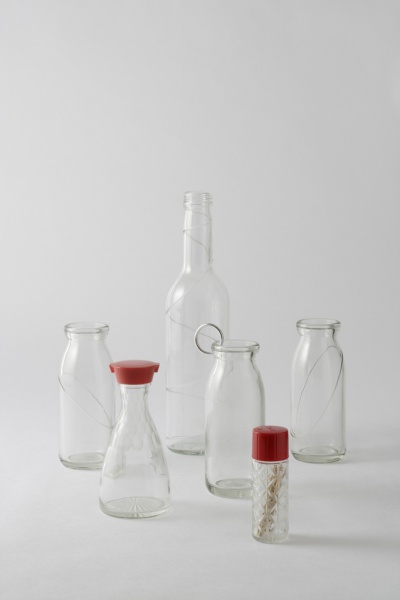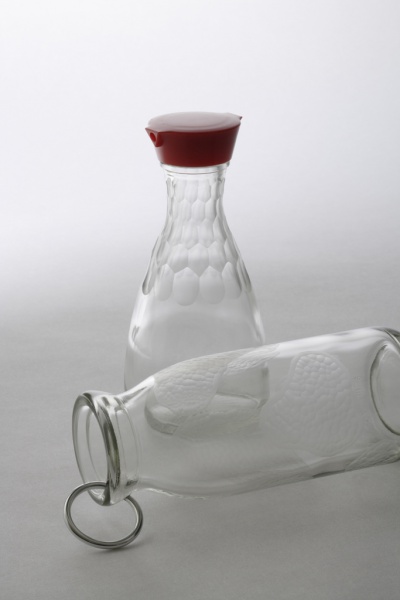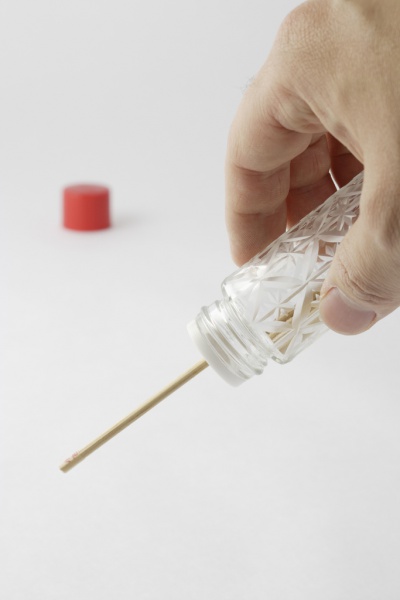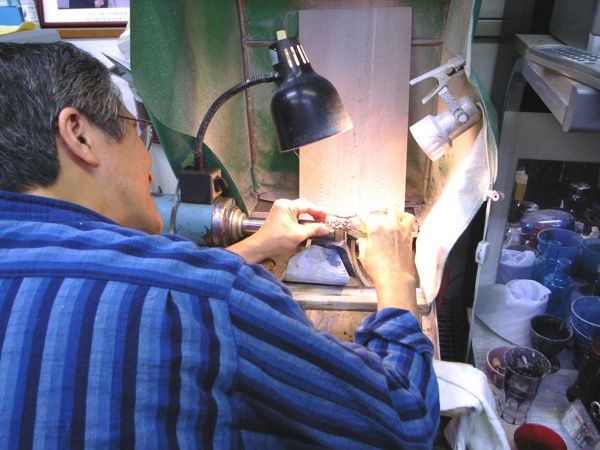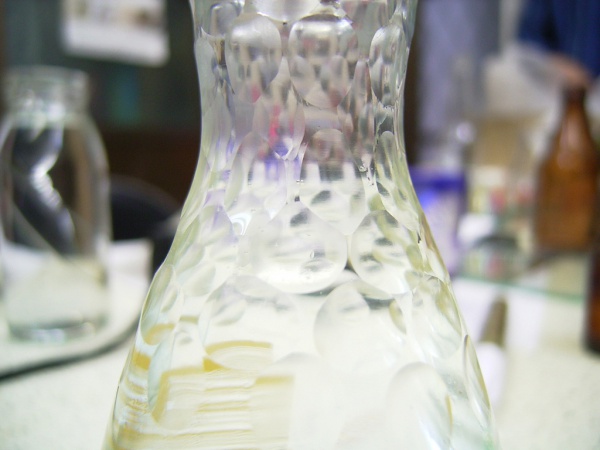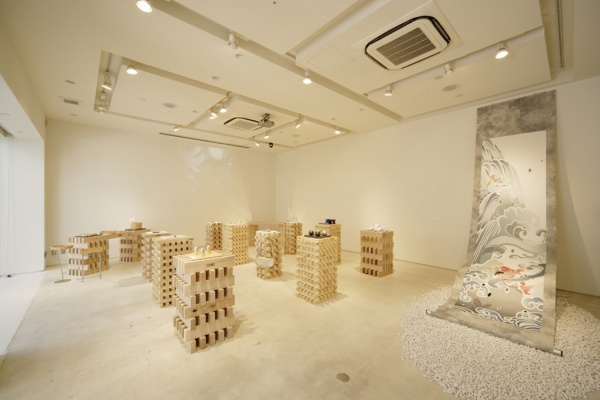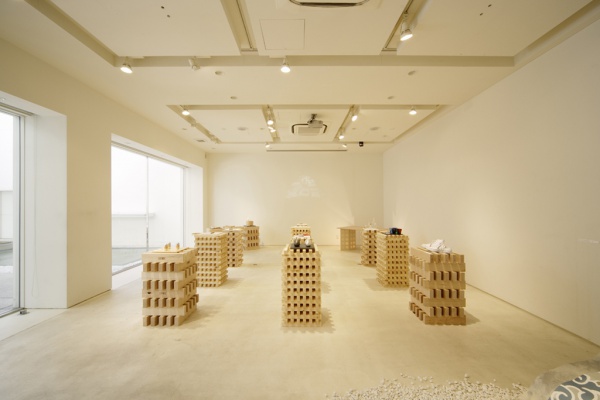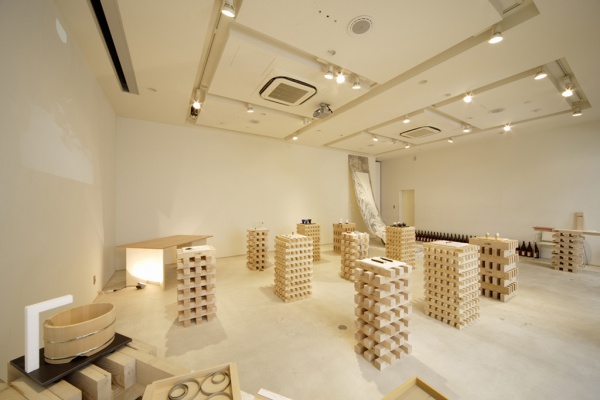主要用途: プロダクト
製作: 大久保忠幸 (キリコ ボトル)/鈴木和也 (会場什器)
所在・会場: GALLERY le bain
設計期間: 2006.07-2007.01
施工期間: 2007.02-03
会期: 2007.03.20-25
写真: 阿部良寛
江戸の伝統技術と心意気を現代に継承する名工と道具達を日常生活のシーンに復活させたいと願うクリエーターが取り組むプロジェクト、「江戸意匠」。6日間の会期で行われたGALLERY le bainでの展覧会の出品作品と会場構成の計画である。
江戸切子師の大久保 忠幸氏との合作となる「キリコ ボトル」は、記号のようになってしまった切子技術を普段見慣れた空きビンへ施すことによって、それぞれへの新たな眼差しを提供する。
魚のうろこ模様を首周りに施された醤油ビン、ボトルを傾けたときの液体の軌跡や特殊な加工で牛柄をまとった牛乳ビン、キャップのネジ切り溝が全体に螺
旋模様を描いたワインボトル、穴に注目しておみくじに生まれ変わった七味ビン。醤油ビン、牛乳ビン、ワインボトルなど食卓のレギュラーたちが、江戸切子の技術によって生まれ変わる。そのささいな卓上の変化が日常の生活を豊かにしてくれる。
各デザイナーの作品群は、垂木などの角材を交互に組み上げた展示什器12台の上で展示される。普段裏方に回りがちな下地材が一転、会場全体に表情を与え
る役目を担う。
Principle use: PRODUCT
Production: Tadayuki Ohkubo (KIRIKO BOTTLE) / Kazuya Suzuki (Table)
Building site: GALLERY le bain
Design period: 2006.07-2007.01
Construction period: 2007.02-03
Duration: 2007.03.20-25
Photo: Abe-Ryoukan
“Edo Isho”, an exhibition project prepared by creators hoping for the revival of artisans and tools of Japanese traditional craftsmanship and the spirit that have been handed down since the Edo period. We designed the structure of the six-day exhibition held at GALLERY le bain and also works to be displayed.
“KIRIKO BOTTOLE” that was made in collaboration with Tadayuki Okubo, a cut glass artisan, gives a new perspective from which to look at familiar glass bottles utilizing conventional glass cutting technique which is now considered as a symbol.
A soy sauce pot with fish scale pattern around the neck, a milk bottle with a circle engraved around like a liquid level as it is tilted and another one with cow pattern utilizing special cutting technique, a wine bottle with spiral pattern spreading from thread for
the bottle cap to the bottle body, a spice bottle with a hole for drawing sacred lots. Things that you see everyday in the dining room such as soy sauce pots, milk bottles and wine bottles were reborn by artistic craftsmanship of cut glass. Such a small change in the familiar sight enriches our lives.
Works designed by artisans and creators were placed on twelve display counters composed of many layers of lumber such as rafters. Those brandering that usually works behind the scenes played a vital role
in giving the entire room a unique look.
